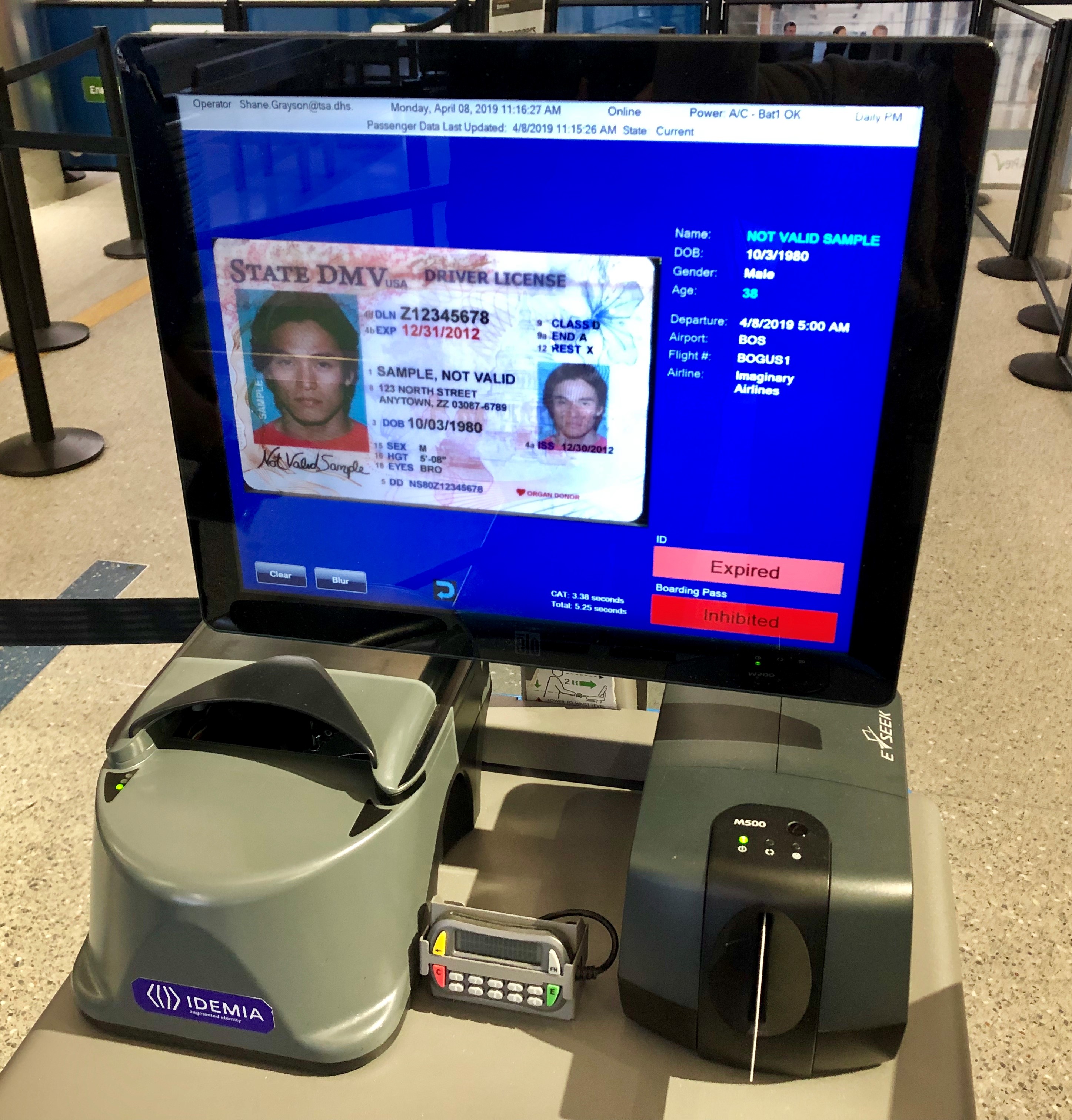 New TSA credential authentication technology units like this one are being used at BOS. (TSA photo)
New TSA credential authentication technology units like this one are being used at BOS. (TSA photo)
BOSTON — New technology that confirms the validity of a traveler’s identification (ID) and confirms their flight information in near real time is being used by Transportation Security Administration (TSA) officers at several security checkpoint lanes at Boston Logan International Airport.
Boston was one of the first airports in the nation to test Credential Authentication Technology (CAT) scanners last fall before they were rolled out to other airports. TSA has 25 CAT units in use at the airport.
“The technology enhances detection capabilities for identifying fraudulent documents such as driver’s licenses and passports at checkpoints and increases efficiency by automatically verifying passenger identification,” says TSA’s Massachusetts Federal Security Director Bob Allison. “The system will also confirm the passenger’s flight status in near real time through a secured connection.”
When a traveler hands the TSA officer their ID, the officer places it in the CAT unit, which scans the ID and informs the TSA officer whether the ID is valid. Travelers who approach the TSA travel document checking podium do not have to show their boarding pass because the CAT unit verifies that the traveler is prescreened to travel out of the airport for a flight that day. Even with TSA’s use of CAT, travelers still need to check-in with their airline in advance and bring their boarding pass to their gate agent to show the airline representative before boarding their flight.
This technology will enhance detection capabilities for identifying fraudulent documents at the security checkpoint.
CAT units authenticate more than 2,500 different types of IDs including passports, military common access cards, retired military ID cards, Department of Homeland Security Trusted Traveler ID cards, uniformed services ID cards, permanent resident cards, U.S. visas and driver’s licenses and photo IDs issued by state motor vehicle departments.
A CAT unit consists of the passport reader, an ID card reader, a Federal personal identity verification ID card reader, a monitor, a stand and a UV light. Each unit costs approximately $27,000.
TSA plans to have more than 500 CAT units deployed at over 40 airports nationwide by the end of February. CAT units will not be installed at every checkpoint lane a

In addition, it is critical that travelers have their REAL ID-compliant driver’s licenses or other acceptable form of identification by the Oct. 1, deadline. The CAT units will not accept a driver’s license after Oct. 1 if it is not REAL ID-compliant.
Passed by Congress in 2005, the REAL ID Act enacted the 9/11 Commission's recommendation that the federal government “set standards for the issuance of sources of identification, such as driver's licenses.” The Act and implementing regulations establishes minimum security standards for state-issued driver's licenses and identification cards and prohibits federal agencies, like TSA, from accepting driver’s licenses and identification cards from states that do not meet these standards for official purposes, such as getting through the airport security checkpoint to board a plane.
To get the REAL ID-compliant driver’s license, individuals will need to visit their local Massachusetts Registry of Motor Vehicles office in person and bring certain documents to prove U.S. citizenship and state residency. Requirements include two proofs of in-state address, one proof of Social Security number (typically people bring their Social Security card), and proof of identity and legal presence as the state requires.
For more information and details about how to obtain a REAL ID driver’s license or identification card in Massachusetts, visit the state’s REAL ID information page.
